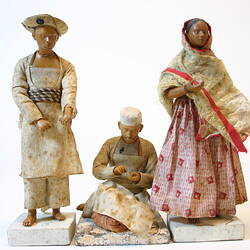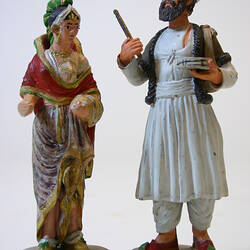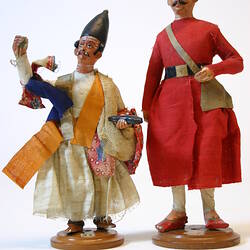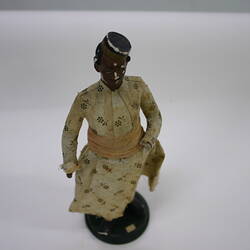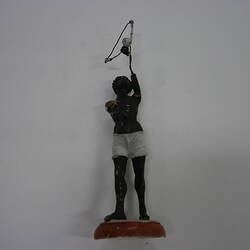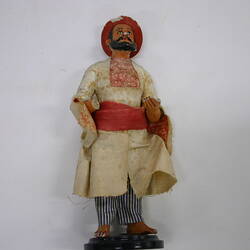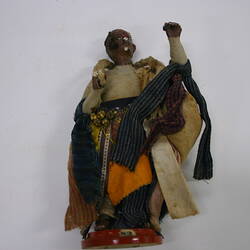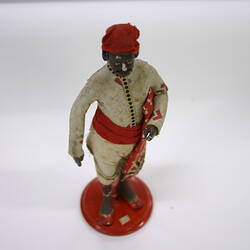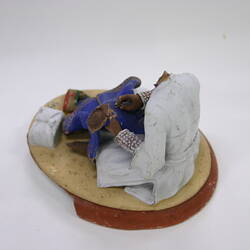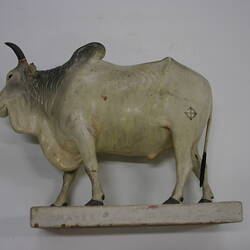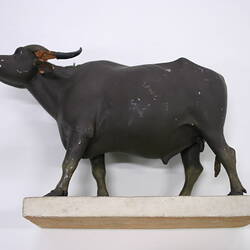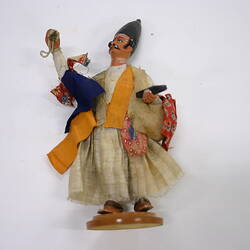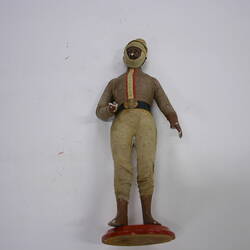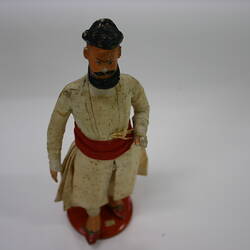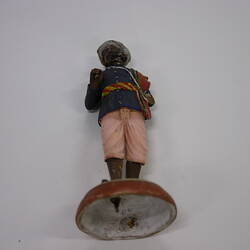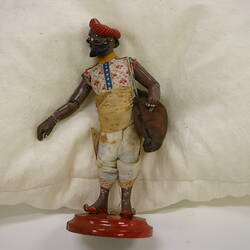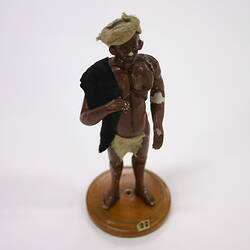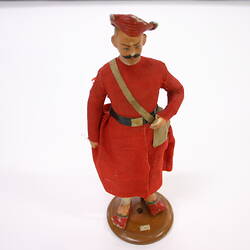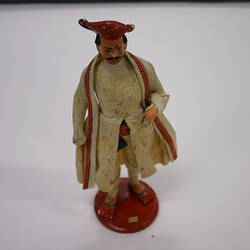Clay figure modelling has been widely practiced in India for hundreds of years. Models of humans, animals and scenes from everyday life have been used for worship, as toys, ornamentation and for ethnographic purposes. (Watt 1903, pp. 88-89)
The creation of clay toys, the furnishing of various idols with attendants, and the inclusion of clay scenes from daily life in religious celebrations saw a gradual shift towards naturalism in clay figure modelling in certain regions (Mukharji 1888, p.62). This naturalistic approach was increased during the 18th century with the arrival of Western traders, who took souvenirs home from India, and European settlers and planters, who confirmed their status within the community as patrons of local artists (Ghose 1981, pp. 46-48). While the manufacture of traditional clay toys and religious idols continued throughout India in the 18th century, the manufacture of naturalistic clay models was centred in three regions: Krishnanagar, Lucknow and Poona (Watt 1903, p.89). The establishment of government art schools in Calcutta, Madras and Bombay during the late 19th century further increased European influence on the various styles of clay modelling. Men such as Henry Locke and John Kipling, headmasters of the art schools and selectors for Indian courts at international exhibitions, had significant influence on the direction of 'traditional' Indian arts and crafts.
The advent of international exhibitions, the first held in London in 1851, saw an increasing interest in the exotic, and in the peoples, customs and traditions of the non-Western world (Mathur 2000, pp. 492-524). The clay figures of India were an obvious format in which to represent Indian people, life and culture. The use of clay figures as ethnographic representations and souvenirs was supplemented at many mid to late 19th century exhibitions by the use of living ethnographic exhibits, with exhibition organisers bringing out native 'craftsmen' to add to the authenticity of their display (Mathur 2000, pp. 492-524). The 'craftsmen' exhibiting at the 1886 Colonial and India Exhibition had been trained in their craft in Agra jail. Like the focus of the clay modellers on 'traditional' Indian life these 'living' exhibits represented European ideas of 'natives' rather than reality.
References:
Bose, Bhupen (2007). 'Famous Clay Dolls Of Krishnagar' Kashmir Times Sunday Magazine, July 29.
Ghose, Benoy (1981). Traditional Arts and Crafts of West Bengal: a sociological survey, Calcutta, Papyrus.
Hoffenberg, Peter H. (2001). An empire on display : English, Indian, and Australian exhibitions from the Crystal Palace to the Great War, Berkeley, University of California Press.
Hoffenberg, Peter H. (2003). How Empire Mattered: Imperial Structures and Globalization in the Era of British Imperialism, Berkeley: University of California Press.
Jain, Kajri (2007). Gods in the Bazaar: The economics of Indian Calender Art, Durham, Duke University Press.
Mathur, Saloni (2000). 'Living Ethnological Exhibits: The Case of 1886', Cultural Anthropology, (15,4) pp. 492-524.
Mukharji, T. N. (1888). Art Manufactures of India: specially compiled for the Glasgow International Exhibition, 1888, Calcutta, Superintendent of Government Printing.
Watt, George (1903). Indian Art at Delhi, 1903: Being the Official Catalogue of the Delhi Exhibition, 1902-1903, Calcutta, Superintendent of Government Printing.
More Information
-
Keywords
-
Authors
-
Article types

